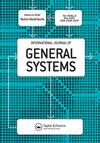GRAPGT: GRAdual patterns with gradualness threshold
IF 2.9
4区 计算机科学
Q2 COMPUTER SCIENCE, THEORY & METHODS
引用次数: 0
Abstract
The traditional algorithms that extract the gradual patterns often face the problem of managing the quantity of mined patterns, and in many applications, the calculation of all these patterns can prove to be intractable for the user-defined frequency threshold. Moreover, the concept of gradualness is defined just as an increase or a decrease variation. Indeed, a gradualness is considered as soon as the values of the attribute on both objects are different. This does not take into account the level of variation. Then, the variation of is considered as the same way as that of . As a result, numerous quantities of patterns extracted by traditional algorithms can be presented to the user, although their gradualness (due to the small variation) could be only a noise in the data. To address this issue, this paper suggests introducing the gradualness threshold from which to consider an increase or a decrease variation. In contrast to the literature approaches, the proposed approach takes into account the user's preferences on the gradualness threshold. The user knowledge could be used to fix the value of gradualness threshold. The proposed algorithm makes it possible to extract gradual patterns on certain databases where state-of-the-art gradual patterns mining algorithms fail due to too large search space. Moreover, results from an experimental evaluation on real databases show that the proposed algorithm is scalable, efficient, and can eliminate numerous patterns that do not verify specific gradualness requirements to show a small set of patterns to the user.GRAPGT:具有渐变阈值的GRAdual图案
传统的渐进式模式提取算法常常面临模式挖掘量管理的问题,并且在许多应用中,对于用户自定义的频率阈值,所有这些模式的计算都很棘手。此外,渐进性的概念被定义为增加或减少的变化。实际上,只要两个对象上的属性值不同,就会考虑渐变。这并没有考虑到变异的程度。的变化与的变化相同。因此,通过传统算法提取的大量模式可以呈现给用户,尽管它们的渐进性(由于变化小)可能只是数据中的噪声。为了解决这一问题,本文建议引入渐进式阈值来考虑增减变化。与文献方法相比,本文提出的方法考虑了用户对渐进性阈值的偏好。用户知识可以用来确定渐变阈值。本文提出的算法使得在某些数据库中提取渐进式模式成为可能,而现有的渐进式模式挖掘算法由于搜索空间太大而无法实现。此外,在真实数据库上的实验评估结果表明,该算法具有可扩展性和有效性,并且可以消除大量不验证特定渐进性要求的模式,从而向用户显示一小部分模式。
本文章由计算机程序翻译,如有差异,请以英文原文为准。
求助全文
约1分钟内获得全文
求助全文
来源期刊

International Journal of General Systems
工程技术-计算机:理论方法
CiteScore
4.10
自引率
20.00%
发文量
38
审稿时长
6 months
期刊介绍:
International Journal of General Systems is a periodical devoted primarily to the publication of original research contributions to system science, basic as well as applied. However, relevant survey articles, invited book reviews, bibliographies, and letters to the editor are also published.
The principal aim of the journal is to promote original systems ideas (concepts, principles, methods, theoretical or experimental results, etc.) that are broadly applicable to various kinds of systems. The term “general system” in the name of the journal is intended to indicate this aim–the orientation to systems ideas that have a general applicability. Typical subject areas covered by the journal include: uncertainty and randomness; fuzziness and imprecision; information; complexity; inductive and deductive reasoning about systems; learning; systems analysis and design; and theoretical as well as experimental knowledge regarding various categories of systems. Submitted research must be well presented and must clearly state the contribution and novelty. Manuscripts dealing with particular kinds of systems which lack general applicability across a broad range of systems should be sent to journals specializing in the respective topics.
 求助内容:
求助内容: 应助结果提醒方式:
应助结果提醒方式:


